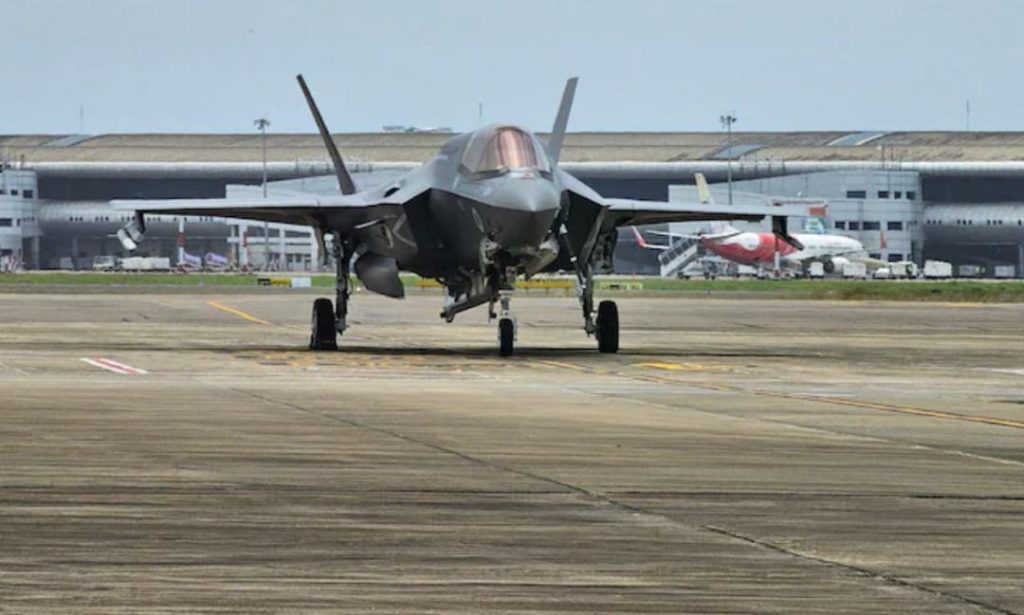
Engineering Issues: UK High Commission on F-35 Jet Stuck in Kerala
The United Kingdom’s F-35B fighter jet, which made an emergency landing at the Thiruvananthapuram airport in Kerala, has been grounded for nearly two weeks now. The aircraft was supposed to return to its carrier after the emergency landing, but it has been stuck on the ground due to an engineering issue. The British High Commission has finally responded to the situation, providing some insights into the problem.
According to a report by NDTV, the High Commission stated that the aircraft had “subsequently developed an engineering issue whilst on the ground which precluded its return to the Carrier.” The report also mentions that the jet has been grounded for nearly two weeks now, and there has been no update on when it will be able to take off again.
The F-35B fighter jet is a state-of-the-art aircraft, known for its advanced capabilities and stealth technology. However, it seems that the latest engineering issue has put a spoke in the wheels of its operations. The situation has raised questions about the reliability of the aircraft and the effectiveness of the maintenance procedures in place.
The emergency landing of the F-35B jet at the Thiruvananthapuram airport was a major incident that caught everyone by surprise. The airport is not a regular stop for fighter jets, and the sudden arrival of the British warplane created a buzz among locals and aviation enthusiasts alike.
The F-35B jet is a variant of the F-35 Lightning II, which is a multi-role fighter jet used by the Royal Air Force (RAF) and the Royal Navy. The aircraft is known for its versatility and ability to operate from both land and sea-based platforms. The F-35B is used by the Royal Navy’s aircraft carrier HMS Queen Elizabeth, which is the largest warship in the British Royal Navy.
The engineering issue that has grounded the F-35B jet is not a new problem. The aircraft has been plagued by technical issues and development delays since its introduction in the late 1990s. The F-35 program has been criticized for its cost overruns, delays, and technical issues. However, the British High Commission has not provided any further information about the nature of the engineering issue or the steps being taken to resolve it.
The grounding of the F-35B jet has raised concerns about the reliability of the aircraft and the effectiveness of the maintenance procedures in place. The situation has also highlighted the importance of having a robust maintenance infrastructure in place to ensure the smooth operation of complex aircraft like the F-35B.
The F-35B jet’s emergency landing at the Thiruvananthapuram airport has also raised questions about the safety procedures in place at Indian airports. The incident has highlighted the need for Indian airports to have robust safety procedures in place to handle emergency situations like this.
The F-35B jet’s grounding has also had a significant impact on the British Royal Navy’s operations. The aircraft is used by the Royal Navy’s aircraft carrier HMS Queen Elizabeth, which is currently on a deployment in the Asia-Pacific region. The grounding of the F-35B jet has likely caused significant disruptions to the Royal Navy’s operations, and it remains to be seen when the aircraft will be able to return to service.
In conclusion, the grounding of the F-35B jet due to an engineering issue has raised concerns about the reliability of the aircraft and the effectiveness of the maintenance procedures in place. The situation has highlighted the importance of having a robust maintenance infrastructure in place to ensure the smooth operation of complex aircraft like the F-35B. The incident has also raised questions about the safety procedures in place at Indian airports and the impact it has had on the British Royal Navy’s operations.
Source:






